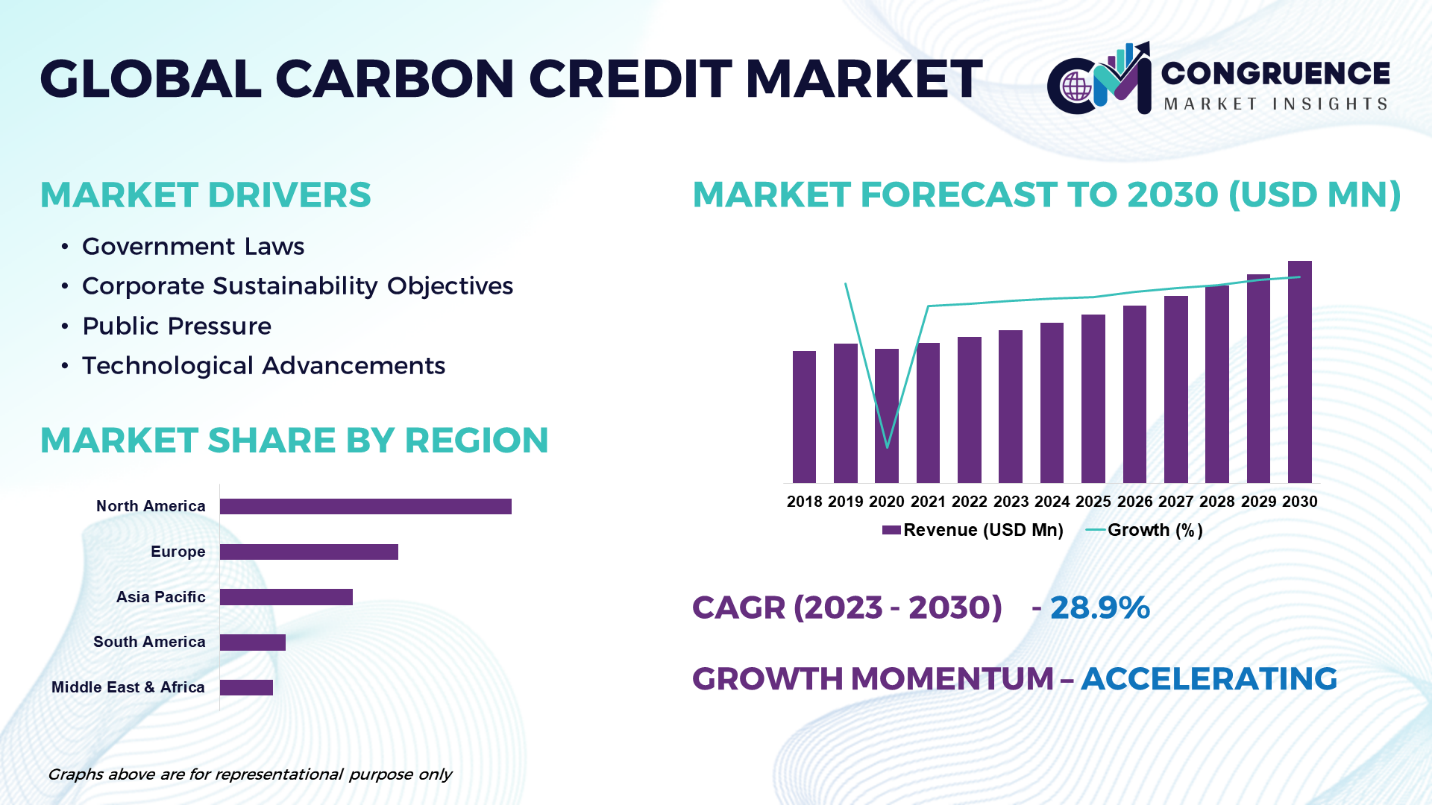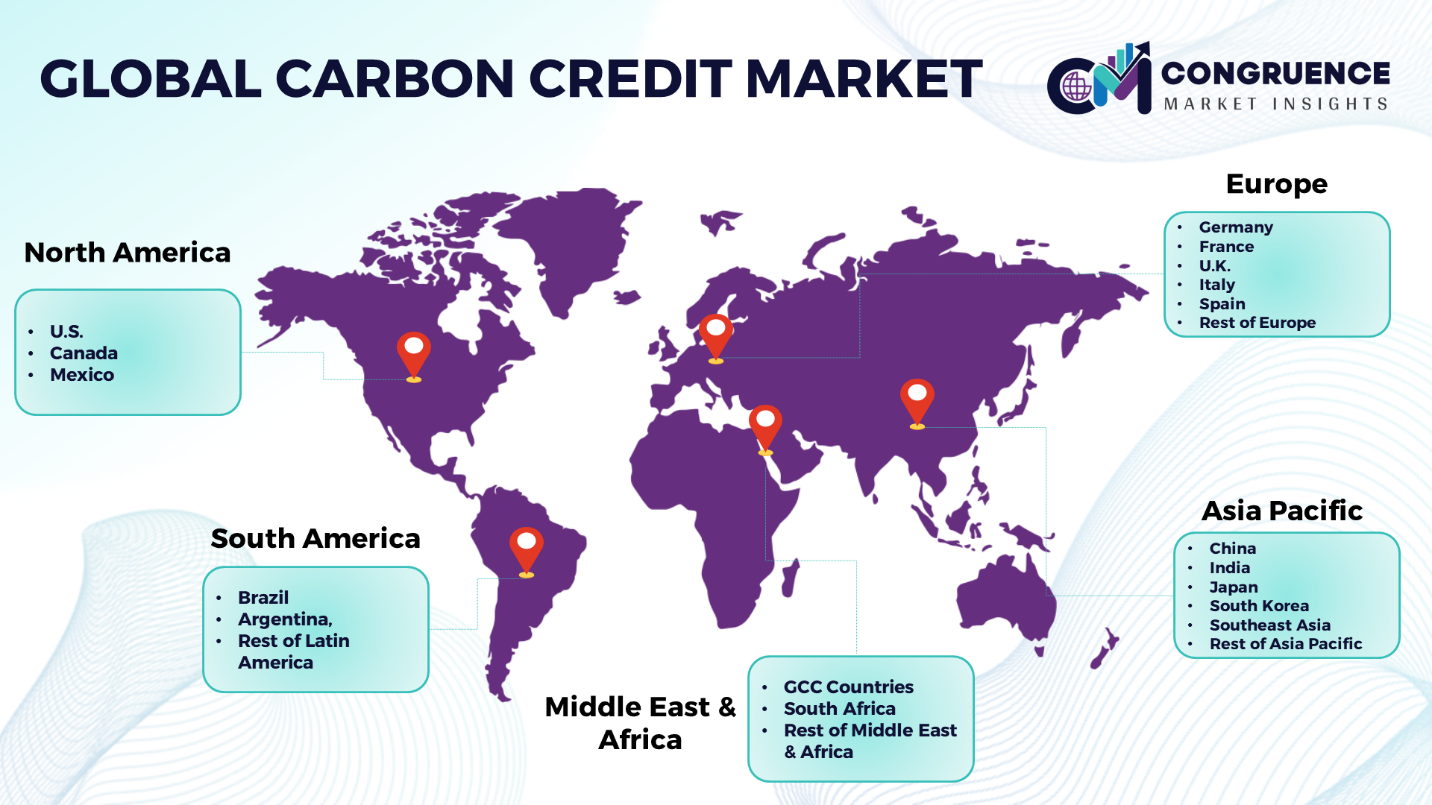Reports
The Global Carbon Credit Market is expected to expand at a CAGR of 28.9% between 2023 and 2030. A carbon credit is simply an offset for those who produce greenhouse gases. It is a marketable permit or certificate that gives the holder the permission to emit one ton of carbon dioxide or the equivalent of another greenhouse gas. Reducing carbon dioxide and other greenhouse gas emissions from industrial processes is the primary objective of the carbon credit system, which aims to mitigate the impacts of global warming. One way to reduce greenhouse gas emissions is by using carbon credits. Emission caps are imposed by governments or regulatory bodies. Certain companies cannot afford to immediately reduce their emissions. They can thus buy carbon credits in order to abide with the emission cap. Voluntary Emissions Reduction (VER) is the term used to describe a carbon offset that is traded for credits in the over-the-counter or voluntary market. On the other hand, Certified Emissions Reduction (CER) refers to emission units (or credits) that are produced by a regulatory framework in order to offset the emissions of a project. The primary distinction between the two is that, unlike the VER, the CER is governed by a third-party certifying organization.

Carbon Credit Market Major Driving Forces
Government Laws: Various laws have been put in place by governments all over the world to minimize carbon emissions. Some of these regulations include limiting the amount of greenhouse gases that businesses are allowed to produce. As businesses attempt to comply with these requirements, this generates demand for carbon credits.
Corporate Sustainability Objectives: A lot of businesses have established sustainability objectives and are actively looking for methods to lower their carbon impact. One method they can offset their emissions and meet their environmental goals is by buying carbon credits, driving the carbon credit market.
Public Pressure: As consumers become more conscious of how their decisions affect the environment, they put pressure on businesses to lower their carbon footprints. As a result, businesses may decide to buy carbon credits to show their dedication to sustainability.
Technological Advancements: The transparency and traceability of selling carbon credits have improved due to technological advancements, particularly in data analytics and block chain. By creating irreversible records of carbon credits, blockchain technology lowers the possibility of fraud and duplicate counting.
Carbon Credit Market Key Opportunities
Cost Reduction: By lowering their carbon emissions through energy-efficient technologies, renewable energy sources, and other low-carbon activities, businesses can save money. They can then make additional cash by selling the carbon credits they produce on the market.
New Revenue Streams: Businesses can create new revenue streams by selling extra carbon credits they produce on the market. Businesses in sectors including manufacturing, transportation, and energy that have substantial carbon emissions may find this to be extremely helpful.
Brand Reputation: By showcasing their dedication to sustainability, businesses that buy carbon credits can enhance their reputation. Employers, investors, and consumers who respect environmental responsibility may be drawn to this.
Carbon Credit Market Key Trends
· Growing uptake of carbon pricing systems
· Growing interest in renewable energy initiatives
· Growth of markets for voluntary carbon
· Blockchain technology integration for transparency
· An increase in initiatives related to corporate sustainability
· The rise of carbon offset initiatives in developing nations
· Application of technologies for carbon capture and storage (ccs)
· Government and business cooperation for emission reduction initiatives
· Creation of cutting-edge carbon credit trading marketplaces
· Multinational companies' integration of carbon neutrality objectives

Market Competition Landscape
Many organizations participate in carbon credit trading and offsetting within the highly competitive global carbon credit market. Reputable companies with a wealth of knowledge and reliability in certifying carbon reduction initiatives, such Verified Carbon Standard, Gold Standard, and Climate Action Reserve, control the market. Financial firms with experience in sustainable finance, such as JPMorgan Chase and Barclays, also provide carbon offset services. Innovative blockchain-based systems are being introduced by up-and-coming firms including Pachama and Nori to improve transparency and expedite carbon credit transfers. The creation of new carbon offset projects and trading methods to solve climate change concerns is facilitated by collaboration between governments, non-governmental organizations, and commercial firms, which further intensifies competition. Prominent players in the market include:
· Climate Action Reserve
· Gold Standard
· Verified Carbon Standard
· JPMorgan Chase
· Barclays
· Pachama
· Nori
· Carbon Trust
· TerraPass
· South Pole
· 3Degrees
· EcoAct
· Carbon Clear
· Natural Capital Partners
· CDP (formerly Carbon Disclosure Project)
|
Report Attribute/Metric |
Details |
|
Base Year |
2022 |
|
Forecast Period |
2023 – 2030 |
|
Historical Data |
2018 to 2022 |
|
Forecast Unit |
Value (US$ Mn) |
|
Key Report Deliverable |
Revenue Forecast, Growth Trends, Market Dynamics, Segmental Overview, Regional and Country-wise Analysis, Competition Landscape |
|
Segments Covered |
· By Carbon Credit Type (Certified Emission Reductions (CERs), Verified Emission Reductions (VERs), EU Emission Allowances (EUAs)) · By Project Type (Renewable Energy Projects, Forestry and Land Use Projects, Industrial Projects, Agriculture Projects) · By End-user (Corporate, Government, Individuals) |
|
Geographies Covered |
North America: U.S., Canada and Mexico Europe: Germany, France, U.K., Italy, Spain, and Rest of Europe Asia Pacific: China, India, Japan, South Korea, Southeast Asia, and Rest of Asia Pacific South America: Brazil, Argentina, and Rest of Latin America Middle East & Africa: GCC Countries, South Africa, and Rest of Middle East & Africa |
|
Key Players Analyzed |
Climate Action Reserve, Gold Standard, Verified Carbon Standard, JPMorgan Chase, Barclays, Pachama, Nori, Carbon Trust, TerraPass, South Pole, 3Degrees, EcoAct, Carbon Clear, Natural Capital Partners, CDP |
|
Customization & Pricing |
Available on Request (10% Customization is Free) |
